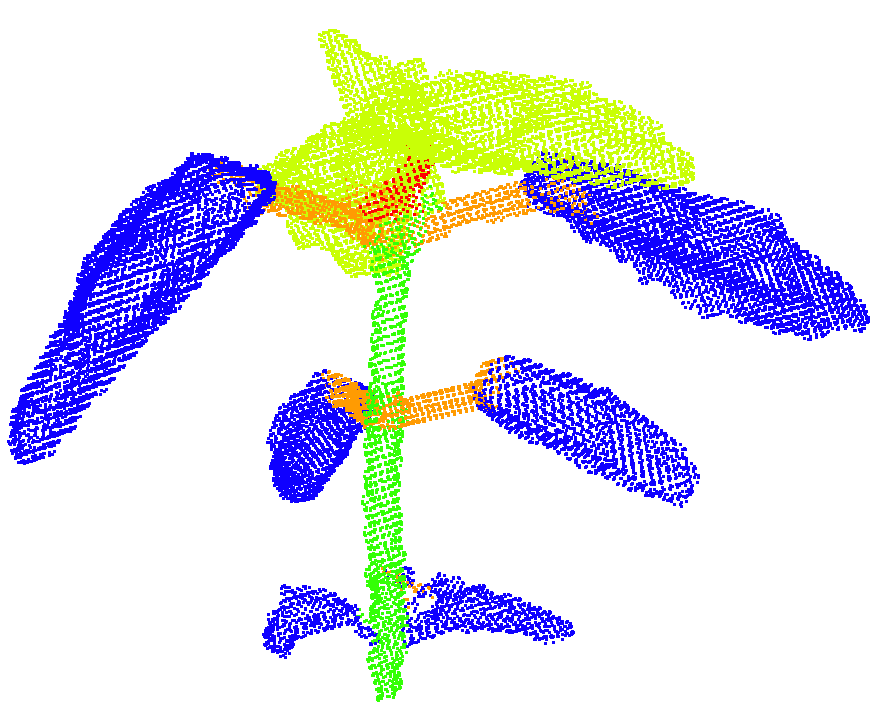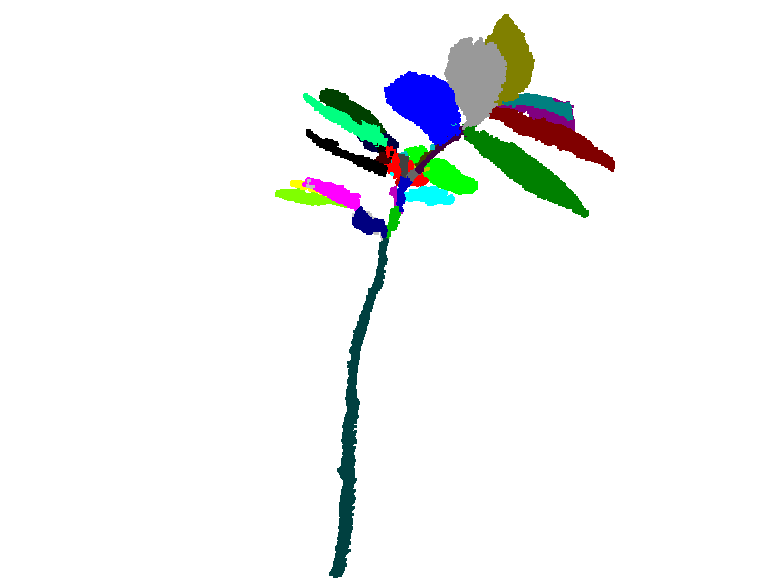Plant segmentation into organs
The geometry of the plant is often complex. Subdividing it into simpler parts (ideally, its organs) helps the computer to analyze it. Such segmentation can be:
- semantic (the word classification is also used), which means each 3D point of the input data is given a label according to the type of organ it belongs to (stem, leaf blade, etc.),
- and/or by instance, meaning all points belonging to the same organ (e.g., the main stem or a given leaf blade), and only them, share the same label.
Simultaneous semantic and instance segmentation of plant 3D point clouds
Current main methods for semantic and/or instance segmentation of plants are based on deep learning, requiring a large quantity of training data while being time and memory-consuming and without any formal guarantee on the botanical validity of the output. We propose a two-level, graph-based approach that does not suffer from these limitations while reaching competitive quantitative results. We compute local geometric and spectral features on a neighbourhood graph of the points to distinguish between linear organs (main stem, branches, petioles) and two-dimensional ones (leaf blades) and even 3-dimensional ones (apices). Then a quotient graph connecting each detected macroscopic organ to its neighbours is used both to refine the labelling of the organs and to check the overall consistency of the segmentation. A refinement loop allows to correct segmentation defects.
Context: Katia Mirande's PhD thesis, ROMI project
Collaborators: Katia Mirande (PhD student), Christophe Godin (senior researcher, Inria Lyon), Fabrice Besnard (researcher, INRAe Lyon)
Main paper: [FPS'22]
Data set: Chenopodium album 3D point clouds (acquisitions by Marie Tisserand, Julie Charlaix and Fabrice Besnard)
A spectral clustering approach to decompose seedlings into elementary units
We propose a semi-automatic approach based on the theory of spectral clustering to segment a 3D point cloud of a plant (typically acquired with a laser scanner device) into elementary units (branches, petioles, leaf blades). The approach is designed for small plants with distinguishable branches and leaves, such as tree seedlings. The main idea underlying the approach is that the spectral embedding of the graph aligns the points along the shape's principal directions.
Context: PlantScan3D project
Collaborators: Eric Casella (researcher, Forest Research UK), Rémy Cumont (intern), Dobrina Boltcheva (postdoc)
Main paper: [IJRS'16]


